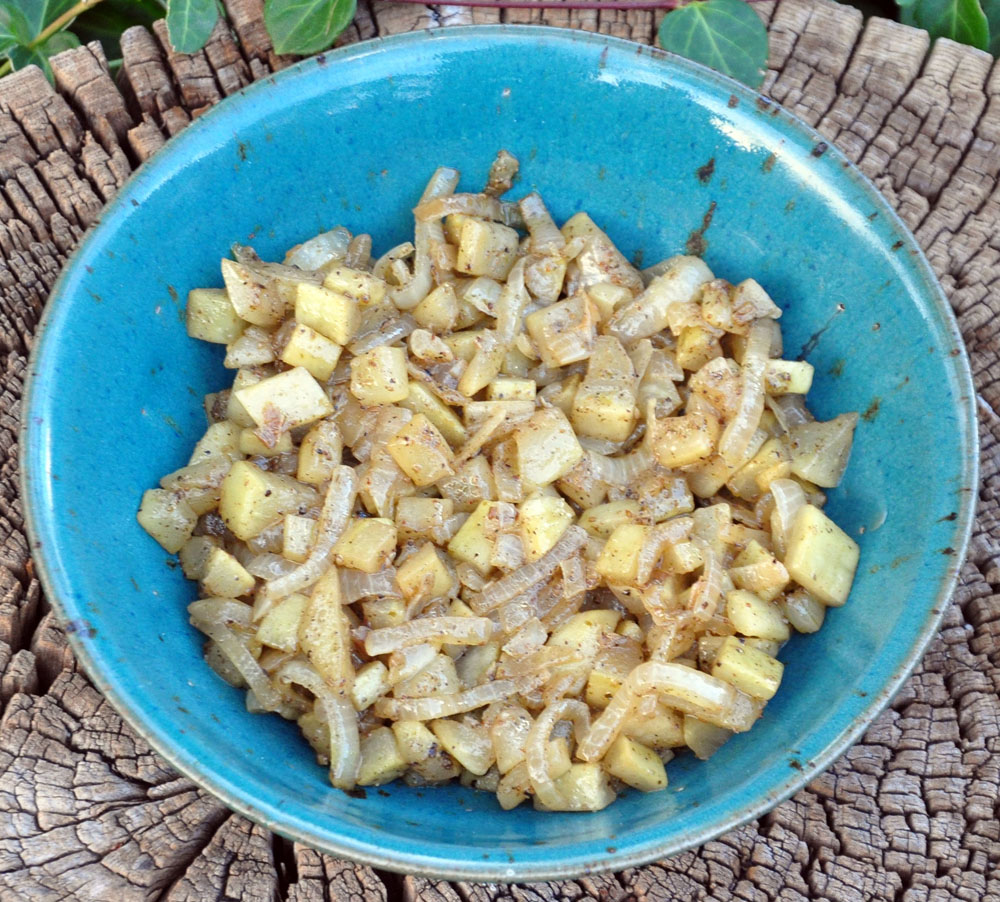Roman Gourds

Gourds were a vital part of the pre-Columbian European diet. The name ‘gourd’ springs from the Old French ‘coorde’, which was derived from the Latin ‘cucurbita’. This root evolved into the Italian ‘zucca’, with the young fruit being called ‘zucchini’. In Spain, this vegetable was been known as ‘calabaza’, which is possibly derived from the Arabic ‘qar'a yabisa’ and Persian ‘kharabuz’ for ‘dry gourd’. This helps explain why there are recipes calling for ‘zucchini’ that predate the discovery of the New World by Europeans: these recipes actually were developed for gourds and were then adapted to New World squash once they became available.
In the late 4th or early 5th century AD compilation of Roman recipes attributed to Apicius, in Book 3 (The Gardener) the following recipe for cooked gourds appears:
CUCURBITAS FRICTAS TRITAS
Piper, ligusticum, cuminun, origanum, cepam, vinum, liquamen et oleum. Amulo obligabis in patina et inferes.
This recipe was translated and adapted by John Edwards in his 1984 The Roman Cookery of Apicius (ISBN 978-0881790085). We share it here so that you can try an authentic Roman dish. It is really quite delicious.
½ teaspoon black peppercorns
¼ teaspoon celery seed
¼ teaspoon dry oregano leaf
¼ teaspoon cumin
1 tablespoon extra virgin olive oil
1 medium onion, quartered and thinly sliced
3 cups gourd, peeled, seeded, and cut into ¾” cubes
1/3 cup vegetable stock
1/3 cup dry white wine
salt to taste
Grind together the black pepper, celery seed, oregano, and cumin.
Heat olive oil in a heavy skillet over medium-high heat. Add in the onion and sauté for 5 minutes. Add in the ground spices, and continue cooking until the onions are transparent. Add in the gourd, stock and wine, and cook, stirring occasionally, until the gourd pieces are tender, about 30 minutes. Remove from heat, and adjust seasoning with salt. Place in a serving bowl and garnish with a little extra virgin olive oil.
|
